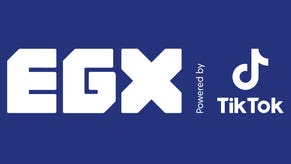Steam Direct fee will be $100 per title
UPDATE: Fee returned to devs once a game hits $1k in sales.
UPDATE 02/06/2017 7.08pm: The $100 Steam Direct fee will be given back to developers once a title reaches $1k in sales, a Steam representative told Ars Technica.
ORIGINAL STORY 02/06/2017 5.16pm: Back in February Valve told us that it would be removing Steam Greenlight this spring and replacing it with a program called Steam Direct, which would put games and other software directly on Valve's marketplace. At the time of the program's announcement there was one big question mark hanging over the upcoming system: how much would it cost to put a game on there?

At the time Valve was thinking somewhere between $200 and $5000. In other words, they wanted it costly enough that the market wouldn't get flooded with junk, but cheap enough that skint developers could still launch their product. Now we finally have an answer to this query: the Steam Direct fee will be mere $100 per game.
That's cheaper than Valve was initially exploring, though technically more expensive than Greenlight, which charges $100 for a developer to upload as many titles as they want. However, the Steam Direct fee will be recoupable once the revenue starts pouring in.
"We knew that we wanted it to be as small as possible to ensure it wasn't a barrier to beginning game developers, while also not being so small as to invite easy abuse by people looking to exploit our systems," said Valve's Aiden Kroll in a Steam community blog post.
"We've seen a bunch of great conversations discussing the various pros and cons of whether there should be an amount, what that amount should be, ways that recouping could work, which developers would be helped or hurt, predictions for how the store would be affected, and many other facets to the decision," he added.
"There were rational and convincing arguments made for both ends of the $100-$5000 spectrum we mentioned. Our internal thinking beforehand had us hovering around the $500 mark, but the community conversation really challenged us to justify why the fee wasn't as low as possible, and to think about what we could do to make a low fee work."
With the fee this low there is a risk of Steam getting flooded with subpar content, but with the userbase expanding as quickly as it has - Valve said it received 16m new users last year alone - one person's trash is another person's treasure. As such Valve's mission isn't to curate the store, but rather figure out ways to direct people to content they'll find appealing - just as Netflix and Amazon make suggestions based on what other folks with similar tastes gravitate towards.
"We're going to look for specific places where human eyes can be injected into the Store algorithm, to ensure that it is working as intended, and to ensure it doesn't miss something interesting," Kroll said.
"We believe that if we inject human thinking into the Store algorithm, while at the same time increasing the transparency of its output, we'll have created a public process that will incrementally drive the Store to better serve everyone using it."
Steam Direct doesn't have a set launch date, but given that Valve was aiming for the (nearly over) spring, it shouldn't be too long until it goes into effect.





.png?width=291&height=164&fit=crop&quality=80&format=jpg&auto=webp)



